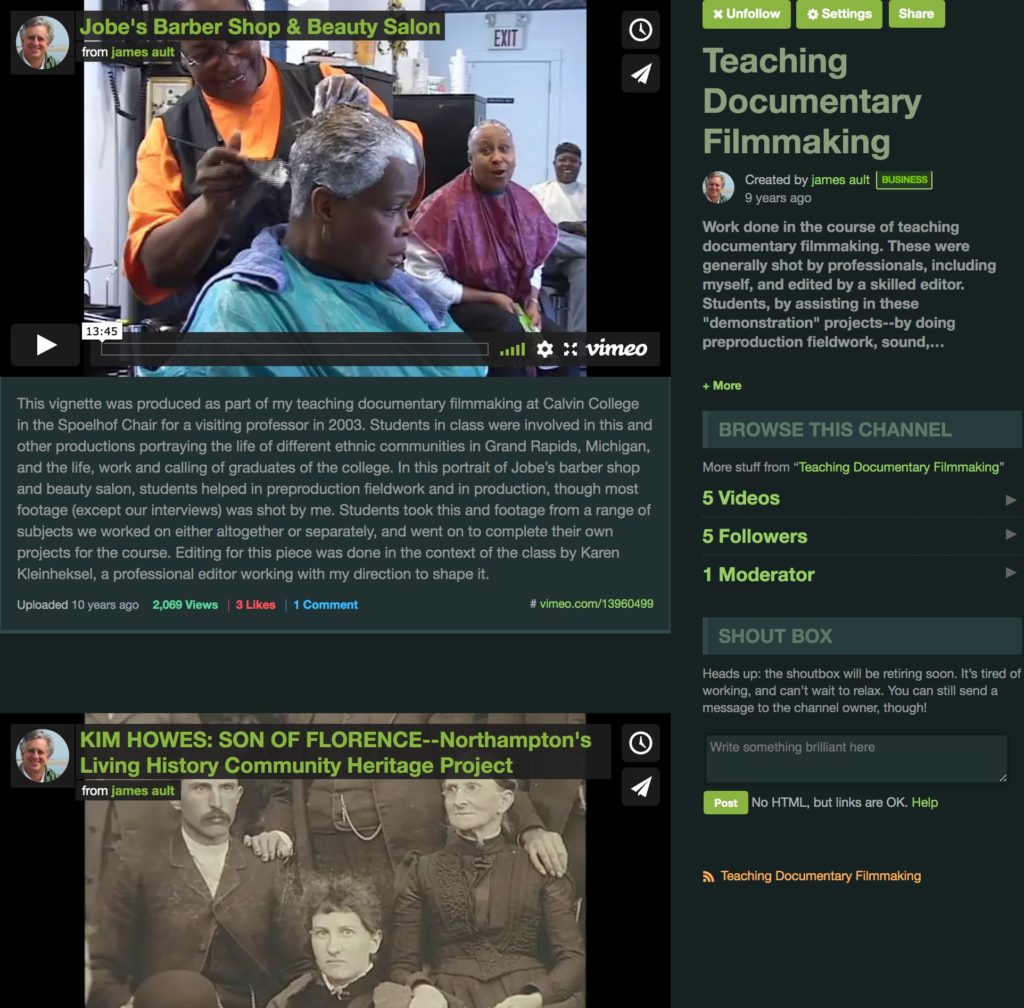Teaching Documentary Filmmaking
(Along with Cross-Cultural Ethnography)
What kind of documentary filmmaking–the why and how of cinéma vérité
Journeying into documentary filmmaking from academic life in the 1980s, I noticed that it was a craft-based industry, learned ideally by doing it alongside masters in the craft. You learn, then, how those particular masters do it. I was fortunate to learn documentary filmmaking by masterly pioneers of its cinéma vérité genre, that is its more intimate form, where stories are told, not by narration and pictures, but by real-life scenes and stories told to camera from those in them.
The first was John Marshall, of the bushmen of the Kalahari series, who got Fred Wiseman going through their film Titicut Follies. One must recall that cinéma vérité filmmaking had a slow start in the US compared with Britain in the era of 16mm film, prior to digital video. That is because making such films requires shooting a lot of footage and in 16mm just 11 minutes cost over $1000 . . .back then! So, Britain, with its state-funded BBC, pioneered in genre of what they called “observational docs.” One of my best friends in graduate school at Brandeis, the late Nancy Jay, happened to be friends with John Marshall’s sister and introduced me to him and he began to orient me to the process, introducing me to people skilled in that type of filmmaking. The editor of one of his great films, N!yae: Story of a !Kung Woman, Adrienne Miesmer, ended up editing my first film, Born Again, an intimate portrait of a fundamentalist Baptist church in the Moral Majority era.
I co-directed and co-produced it with Michael Camerini, whose intimate portrait of extended-family life in India, Dadi’s Family, impressed me with its intimacy and made me think this was the kind of filmmaking I wanted for that project. So, my filmmaking skills were shaped initially by working alongside those masters in the intimate style of cinéma vérité filmmaking. With Michael Camerini, camera on shoulder, and Carol Ramsey, with boom pole on sound, I learned the invaluable art of how to move among people in intimate settings and film their words and actions without ever disturbing them.
Recognizing that documentary filmmaking is best learned by doing, rather studying in a class-room setting, I have taken that approach in opportunities I’ve had to teach documentary filmmaking, both in college settings, and in shorter workshops for various organizations, and also in nurturing the learning experiences of interns working with me on various projects.
My most rigorous experience teaching documentary filmmaking was at Calvin College in Grand Rapids, Michigan, in 2003, when, in the distinguished Spoelhof Chair for a visiting professor, I had a small budget to hire some professional crew and editors to occasionally work on two sets of projects with us. One set was portraying the lives of interesting alumni/ae of the College at work nearby, They included a comedian whose career began in the founding collective of Saturday Night live, an young state representative in Michigan, and a Vietnam vet and retired head of chaplaincy in the US military. The other was to portray life in some of the ethnic communities of Grand Rapids–for example, Dutch, Polish, Irish, Italian, Vietnamese, and African-American. The latter proved an especially rich experience. We were directed by Randal Jelks, then a professor of African American studies at Calvin, to explore life in a vital hub of community life there, Jobe’s barber shop and beauty salon. In all our projects students worked alongside me and other professionals and then went off on their own to carry those stories further, or develop related ones. In the case of Jobe’s, one worked alongside me doing principal camera work, and, one student went on to portray the work of the younger barber there in his volunteer work coaching young boxers in the community, and following some to a championship competition.
For a look at some of the projects done with students at Calvin College and in other settings click on the image below.


